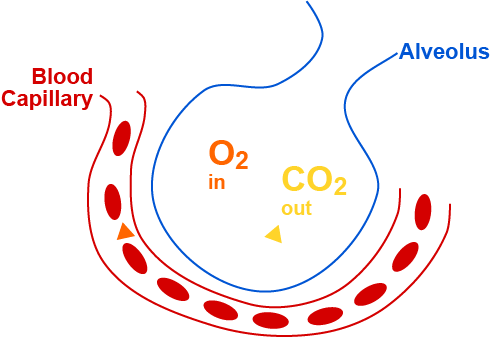


Joseph R. Anticaglia MD
Medical Advisory Board
Several years ago, my wife and I saw a N. Y. Broadway play titled, “The Bronx Tale.” In it, the fine actor and singer Nick Cordero played the gangster character Sonny, the “Capo” of the Bronx neighborhood. A young neighborhood boy admired Sonny who took the youngster under his wings. In brief, Sonny told the neighborhood kid there are devils and angels on your shoulders. In essence he said, I made the wrong choice and I don’t want you to make the same mistakes that I did.
In another Broadway play, he received a Tony nomination for his role in “Bullets Over Broadway.” He also acted in the T. V. police drama, “Blue Bloods,” in addition to other productions. What does this have to do with the present pandemic?

Well, on March 30 of this year, Mr. Cordero, a healthy 41 year old man with no preexisting health conditions, was admitted to Cedars-Sinai Medical Center, Los Angeles with a diagnosis of pneumonia. His initial complaint was fatigue and nothing else. He later tested positive for the COVID-19 virus (SARS CoV2).
On April1, 2020 he was intubated (a tube was put into his windpipe) and placed on a ventilator. The virus prevented his lungs from inhaling enough oxygen for bodily needs and prevented his lungs from getting rid of toxic carbon dioxide.
His hospital course has been stormy and a testament to his grit, the support of his wife, family and friends, but also the relentless savagery of COVID-19 and the struggle physicians have in treating patients with this disease.
The upper respiratory system includes the nose and throat and the area above the voice box (larynx). People who test positive for COVID-19 without involvement of the lungs “usually” have a mild clinical course and recover completely.
The lower respiratory system is the area below the larynx which includes the windpipe (trachea) and the lungs. When we inhale, air goes through the nose or mouth, inferiorly through the larynx and trachea on its way to the lungs. The air enters the lungs via the right and left bronchi which gradually decrease in size and end as alveloli, tiny air sacs. The alveoli are the areas where blood capillaries are found exchanging oxygen (O2) for carbon dioxide (CO2).


COVID-19 attacked Mr. Cardero’s lungs and his blood capillaries. These miniscule blood vessels (one cell thick) connect arteries and veins allowing for the exchange of O2 and CO2 to occur between the blood and the body’s tissues. Deprived of oxygen, one can become increasingly short of breath causing fluid to accumulate in the lungs resulting in pneumonia, fever, shacking chills and, in his case, the need to be placed on a ventilator.
During the course of his hospitalization, he eventually tested negative for COVIC-19. But he’s now left combating the damage done to his brain, heart, lungs, blood vessels, kidneys and other organ systems because of this virus And thus began a series of gruesome and miserable life and death challenges catalyzed by the new coronavirus.
As scientists and physicians grapple to understand how the novel coronavirus shuts down different parts of the body, those with severe infections who don’t die can be left with lifelong disabilities.
The partial information about Cardero’s condition has been provided by his wife, Amanda Kloots, who posted his condition over the internet via instagram. He had his right leg amputated on April 18, 2020 because of blood clots and lack of adequate circulation in that leg.
About a week after his leg amputation, he needed a pacemaker because of heart problems. The virus can infect the heart’s blood vessels or heart tissue giving rise to heart attacks, blood clots, arrhythmias and inflammation.
He suffered two strokes due to blood clots breaking loose form one of his vessels. Patients with brain involvement have experienced seizures, confusion and memory lapses.
During Cardero’s hospital course, his doctors placed him in a medically induced coma; this puts the brain in a state of temporary hibernation reducing the brain’s need for blood, glucose and oxygen. It’s also done to reduce the brain’s electrical activity and to the give the brain time to recover. When we undergo general anesthesia, we experience, a type of temporary, reversible coma.
Another blow to Cardero was Sepsis; i. e. your body’s reaction to life-threatening infections. The misery he and his family endured was compounded when he went into septic shock. There was a dangerous drop in his blood pressure. All organs were at risk of failing.
In such situations, there is a decrease in urination due to kidney failure. Toxic waste products can accumulate poisoning the body. Cardero was treated with dialysis for his kidney failure
The liver plays a pivotal role in the clotting process. In severe septic shock the blood cells needed to clot blood are in short supply (low platelet count). The havoc this virus causes is relentless.
All too often we’re bedazzled by the statistics of this pandemic. The number of confirmed cases of COVID, presently, is over five million worldwide and it has killed hundreds of thousands of people. But the death of one human life due to this virus is a tragedy. It’s personal and painful. It’s not just a number.
This article is intended solely as a learning experience. Please consult your physician for diagnostic and treatment options.